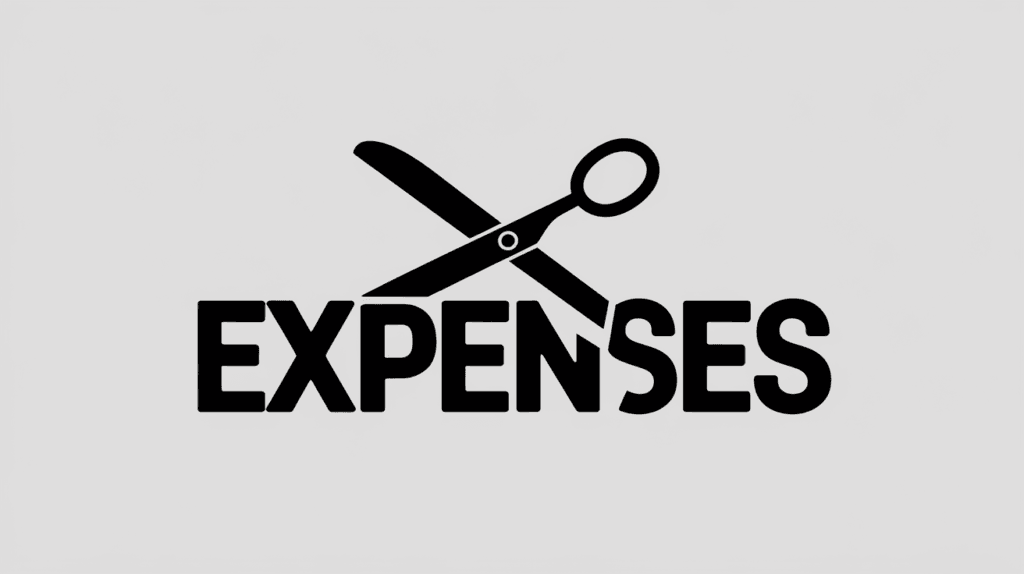Cutting everyday expenses doesn’t have to mean giving up the things you enjoy. Small changes in your routine and creative strategies can lead to significant savings over time. Here are
50 detailed ways to help you save money on common expenses while maintaining your quality of life.
1. Switch to Generic Brands
Generic brands are typically as effective as name-brand products but cost significantly less. Look for generic options when shopping for groceries, over-the-counter medications, or cleaning supplies. Many retailers, such as
Walmart, offer their own high-quality private-label brands that are much cheaper than their branded counterparts.
2. Use Cashback Apps
Cashback apps allow you to earn money back on purchases at popular retailers. For example,
Rakuten offers cashback on online shopping, while
Ibotta rewards you for scanning grocery receipts. These tools can provide significant savings over time by giving you a percentage of your spending back.
3. Cancel Unused Subscriptions
It’s easy to forget about subscriptions you no longer use, such as streaming services or fitness apps. Tools like
Truebill can help you identify recurring charges and cancel subscriptions directly. By doing a subscription audit, you’ll save money without even feeling the pinch.
4. Automate Savings
Automatically transferring a portion of your income into a savings account ensures you consistently set money aside. Many banks, like
Ally, offer automation features that make saving effortless. Over time, these small transfers can add up to a significant safety net.
5. Brew Coffee at Home
Buying coffee daily from cafes adds up quickly, costing hundreds annually. Invest in a good coffee maker or a French press from
Amazon to create café-quality coffee at home. Personalize your brew with syrups and creamers for a fraction of the price of a coffee shop visit.
6. Meal Plan Weekly
Meal planning helps you avoid overspending on groceries and eliminates the need for costly takeout. Apps like
Mealime simplify the process by generating grocery lists and recipes tailored to your preferences. Sticking to a plan also minimizes food waste, saving you even more.
7. Buy in Bulk
Purchasing in bulk reduces the per-unit cost of essentials like rice, pasta, and toiletries. Membership warehouses such as
Costco and
Sam’s Club offer discounts for buying in larger quantities. This approach works best for non-perishable items and products you use frequently.
8. Take Advantage of Coupons
Digital and printable coupons are a great way to save on groceries and household goods. Platforms like
Honey automatically find and apply coupons when you shop online. Combining coupons with store promotions can lead to even bigger savings.
9. Carpool or Use Public Transportation
Sharing rides with coworkers or friends lowers fuel and maintenance costs while reducing your carbon footprint. Public transportation, available in most cities, is another cost-effective way to commute. Check local transit apps for schedules and routes to streamline your travel.
10. Cut the Cable Cord
Cable TV can be expensive, especially if you’re not watching most of the channels. Switching to streaming platforms like
Hulu or
Netflix offers affordable, flexible entertainment options. Many streaming services also allow sharing accounts to reduce costs further.
11. Use Energy-Efficient Bulbs
LED bulbs consume less energy and last much longer than traditional incandescent bulbs. By switching to LEDs, you’ll reduce your electricity bills over time. Retailers like
Home Depot offer a variety of energy-efficient lighting options for every budget.
12. Wash Clothes in Cold Water
Most detergents are designed to work effectively in cold water, making it unnecessary to use hot water for laundry. Switching to cold water for every load reduces energy consumption, lowering your utility bill without sacrificing cleanliness.
13. Air Dry Laundry
Dryers use a significant amount of energy and can cause wear on your clothes. Air-drying laundry on racks or clotheslines extends garment lifespan and reduces electricity costs. Invest in a sturdy drying rack from stores like
Target to make this change easy.
14. Make Your Own Cleaning Supplies
DIY cleaning solutions are cost-effective and eco-friendly. Common household items like vinegar, baking soda, and lemon juice can replace expensive store-bought cleaners. For example, mix equal parts vinegar and water for an all-purpose cleaner that works on most surfaces.
15. Limit Dining Out
Dining out frequently can quickly deplete your budget. Cooking at home saves money and is often healthier. Reserve restaurant visits for special occasions, and consider replicating your favorite dishes at home to enjoy the experience without the cost.
16. Cancel Gym Memberships
Gym memberships can be expensive, especially if you’re not using them regularly. Free fitness apps like
FitOn or YouTube workout channels provide effective alternatives. Basic equipment like dumbbells or resistance bands is enough to create a solid home workout routine.
17. Switch to a Discount Phone Plan
Phone carriers like
Mint Mobile and
Ting offer affordable plans tailored to your usage. By analyzing your monthly data and call usage, you can downgrade to a plan that meets your needs without unnecessary extras.
18. Negotiate Bills
Many service providers, such as internet and insurance companies, are open to renegotiating rates to retain customers. Call your providers and ask for discounts or inquire about current promotions. This simple action can save you hundreds annually.
19. Shop Secondhand
Thrift stores and online marketplaces like
Poshmark and
Facebook Marketplace are treasure troves for affordable clothing, furniture, and electronics. Secondhand shopping is not only cost-effective but also environmentally friendly.
20. Rent or Borrow Tools
For one-time projects, renting tools is far more economical than buying. Many hardware stores, such as
Home Depot, have rental programs. You can also check with friends or neighbors to borrow tools at no cost.
21. Start a Garden
A small vegetable or herb garden can reduce grocery costs and provide fresher, healthier produce. Seeds and starter kits are inexpensive and widely available from retailers like
Burpee. Start with easy-to-grow plants like tomatoes, lettuce, or basil.
22. Use a Programmable Thermostat
Programmable thermostats automatically adjust your home’s temperature based on your schedule, helping you save on heating and cooling. Options like the
Nest Thermostat make it easy to manage your energy use and lower utility bills.
23. Buy Refurbished Electronics
Refurbished products often come with warranties and work like new but cost significantly less. Retailers like
Back Market specialize in refurbished gadgets, offering discounts on everything from smartphones to laptops.
24. Reduce Water Usage
Small changes, like installing low-flow showerheads or fixing leaks, can significantly lower your water bill. Many water-saving devices are inexpensive and easy to install, making this a quick win for your budget and the environment.
25. Limit Credit Card Interest
Paying off your credit card balance in full each month avoids costly interest charges. If you carry a balance, consider transferring it to a card with a lower interest rate or using cashback rewards to offset your expenses.
26. Use Free Entertainment Options
Entertainment doesn’t have to be expensive. Local parks, free museums, and community events offer budget-friendly alternatives to paid activities. Many cities have free outdoor concerts or festivals during the year. Libraries also provide free access to books, movies, and even educational programs.
27. Shop Seasonal Sales
Retailers frequently discount seasonal items at the end of their respective seasons. For instance, buy winter clothing during spring clearance sales or summer patio furniture in the fall. Stores like
Macy’s and
Kohl’s often run clearance promotions that allow you to save big.
28. Make a Budget
Creating a budget is one of the most effective ways to control your spending. Tools like
YNAB help you track your income and expenses, identify areas to cut back, and set financial goals. A well-planned budget ensures you only spend on what truly matters.
29. DIY Beauty Treatments
Salon visits for manicures, facials, or hair treatments can be costly. Opting for DIY treatments at home can save you a significant amount of money. Kits for nail care or hair coloring from stores like
Ulta Beauty provide professional results at a fraction of the cost.
30. Refinance Loans
Refinancing your student loans, auto loans, or mortgage can reduce your interest rate and monthly payments. Platforms like
SoFi or
Credible simplify the refinancing process, helping you secure better terms and save money over time.
31. Switch Insurance Providers
Shopping around for insurance every year can reveal significant savings. Use comparison tools like
Policygenius to evaluate different plans for auto, home, or health insurance. Many companies offer discounts for bundling policies or maintaining a clean record.
32. Pack Your Lunch
Bringing your lunch to work instead of dining out can save hundreds of dollars each month. Invest in reusable containers and plan your meals ahead of time. Simple recipes like salads, wraps, or pasta can be prepared in batches for added convenience.
33. Avoid Bottled Water
Switching to a reusable water bottle is an eco-friendly and cost-effective alternative to buying bottled water. Brands like
Hydro Flask offer durable bottles that keep drinks cold or hot for hours. You’ll save money while reducing plastic waste.
34. Use Cashback Credit Cards
Cashback credit cards reward you for everyday spending by returning a percentage of your purchases as cash. Look for cards with no annual fee, like the
Citi Double Cash Card, which offers up to 2% cashback on all purchases. Use these rewards to offset other expenses.
35. Rent Movies Online
Instead of going to the theater, rent or stream movies online for a fraction of the cost. Platforms like
Amazon Prime Video or
Apple TV offer affordable rentals with a wide selection of titles to choose from.
36. Avoid Impulse Buys
Impulse purchases can add up quickly, draining your budget on items you don’t truly need. Create a 24-hour rule before making non-essential purchases. By giving yourself time to think, you’ll likely avoid unnecessary spending and save money.
37. Cancel Premium Services
Downgrading to free or basic versions of premium services like Spotify or YouTube can save you money without significantly impacting your experience. For instance, Spotify Free still offers music streaming with occasional ads, which is often sufficient for casual listeners.
38. Use a Library
Libraries are an excellent resource for free books, movies, and audiobooks. Many libraries also offer digital lending through apps like
Libby, allowing you to borrow materials directly on your devices without visiting in person.
39. Buy Off-Brand Gasoline
Independent or off-brand gas stations often offer lower prices compared to name-brand chains. Apps like
GasBuddy help you locate the cheapest gas stations near you, saving money on every fill-up.
40. Skip Extended Warranties
Extended warranties are often unnecessary, as most products come with adequate manufacturer warranties. For major purchases, use a credit card that offers extended warranty protection as a built-in perk, eliminating the need for additional costs.
41. Repair Instead of Replace
Fixing items like clothing, appliances, or electronics is often cheaper than replacing them. Local repair shops or DIY guides from platforms like
YouTube can help you extend the life of your belongings while saving money.
42. Use Free Software Alternatives
Many paid software programs have free alternatives that offer similar functionality. For instance,
LibreOffice is a free replacement for Microsoft Office, while
GIMP serves as a robust alternative to Adobe Photoshop.
43. Share Streaming Services
Sharing streaming subscriptions with family or friends allows you to split the cost. Platforms like Netflix, Hulu, and Disney+ often allow multiple profiles under one account, making this a practical way to enjoy entertainment for less.
44. Unplug Electronics
Even when not in use, electronics consume "phantom" energy if left plugged in. Unplug devices like chargers, TVs, and gaming consoles when they’re not needed to lower your electricity bill. Smart power strips can make this process more convenient.
45. Set Spending Limits
Setting daily or monthly spending limits can help curb overspending. Budgeting apps like
Mint or
YNAB make it easy to monitor your spending habits and identify areas where you can cut back.
46. Walk or Bike
Walking or biking short distances instead of driving saves on gas and vehicle maintenance. It’s also a healthy alternative that promotes fitness while reducing transportation costs. Many cities have dedicated bike lanes and pedestrian-friendly areas to encourage this practice.
47. Take Advantage of Loyalty Programs
Loyalty programs reward frequent shoppers with discounts, free items, or exclusive perks. Many grocery stores, coffee shops, and retail brands offer programs that are free to join, allowing you to save money simply by shopping as usual.
48. Limit Alcohol Consumption
Alcohol can significantly inflate your dining and grocery bills. Reducing alcohol consumption or opting for affordable options, such as happy hour specials, can help you save while still enjoying occasional drinks.
49. Buy Reusable Items
Investing in reusable products like coffee cups, water bottles, or silicone food storage bags reduces waste and saves money in the long term. Brands like
Stasher offer eco-friendly alternatives that are both durable and practical.
50. Pay Bills on Time
Late fees can quickly add up, eating into your budget. Set up automatic payments for recurring bills like utilities, credit cards, and subscriptions to ensure they’re paid on time. Many companies also offer discounts for enrolling in autopay.
Final Thoughts
Reducing everyday expenses doesn’t have to feel restrictive. By adopting these 50 creative strategies, you can save money without sacrificing the things you enjoy. Start small, focus on areas where you can easily cut back, and watch your savings grow over time.












